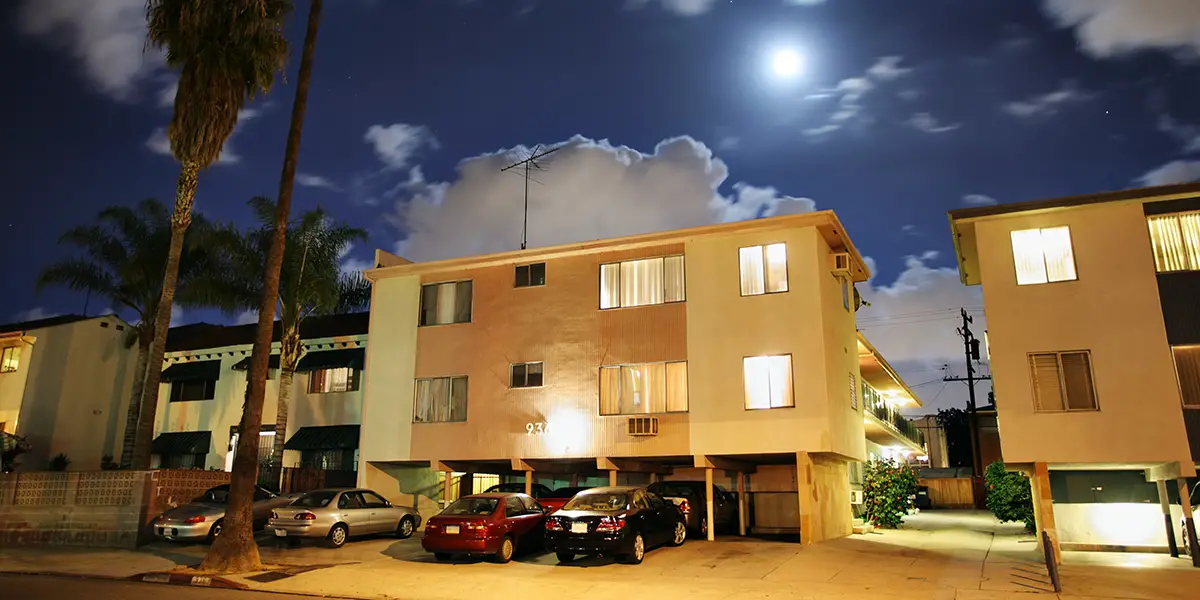
On Tuesday, the Los Angeles City Council unanimously approved a motion to permanently streamline the development of affordable and supportive housing.
This action codifies Mayor Karen Bass’ executive directive to promote the building of affordable housing. As a result, proposals for developments that are entirely affordable housing are exempt from the city’s lengthy review process.
After this agreement, the approval time for 100% affordable projects has significantly decreased; from an average of six months to just 37 days.
The city’s Planning Department has already approved 20 different 100% affordable and supportive housing projects, and 28 more developments (with 2,600 new affordable housing units) are currently in the pipeline.
Keep scrolling for more recaps about the latest headlines in affordable housing 🔽
Massachusetts starts nation’s first ‘green bank’ focused only on affordable housing
Last week, Massachusetts started the Massachusetts Community Climate Bank, a groundbreaking effort to promote climate-friendly affordable housing.
While other green banks have been used to build affordable housing, Massachusetts says that this is the first green bank dedicated entirely to this purpose.
The primary goal is to attract private sector capital for retrofitting existing buildings and supporting the construction of sustainable and energy-efficient structures. The bank also aims to secure federal funds through the Inflation Reduction Act, which includes funds to support clean energy initiatives.
The raised capital will be used to add clean energy and efficient technologies into affordable housing properties, including solar panels, heat pumps, and high-efficiency appliances.
In a press release, Governor Maura Healey stated, “The Massachusetts Community Climate Bank will be our financial engine for moving forward on our climate goals, relieving the pressure of high housing costs, and creating good jobs and healthier communities.” The state aims to reduce greenhouse gas emissions from residential heating by 49% by 2030 and 95% by 2050.
According to Reed Hundt, founder and CEO of the Coalition for Green Capital, green banks generally focus on four categories: solar development, electric transportation, environmental remediation in buildings, and electrification.
These banks collaborate with private lenders, leveraging a combination of public and private funds to support underserved markets. For example, green banks help alleviate some of the risk of difficult projects, which attracts the private sector.
Cincinnati area launches historic affordable housing investment
More than a dozen developers have started phase one of Hamilton County, Ohio’s most significant affordable housing initiative this week.
In collaboration with the Cincinnati Development Fund (CDF) the county will allocate $14 million of American Rescue Plan funds to fund 17 new developments that will introduce a total of 552 affordable housing units. Among these, 445 will be income-restricted units, while 65 will be single-family homes.
“Our board has taken a bold step. It has invested the most that we’ve ever had,” said Hamilton County Commission President Alicia Reece.
While 17 developers have been selected for the initial phase, the county will continue to review applications on a rolling basis, with plans to announce more projects later this year.
Cincinnati, Ohio is the county seat of Hamilton County.
Court rules in favor of controversial Manhattan affordable housing development
In a decade-long battle between affordable housing developers and supporters of preserving Elizabeth Street Garden in Manhattan, a New York appellate court ruled Tuesday in support of the housing development.
The court has given the green light to a 123-apartment development for lower-income individuals over the age of 62 and their families. This decision overturns a previous ruling that had halted the project due to legal challenges from opponents.
Elizabeth Street Garden, located in one of the wealthiest parts of New York City, has long been cherished as a community space for activities such as yoga, poetry readings, and leisurely strolls. However, the scarcity of land in Manhattan and the pressing need for affordable housing sparked a heated debate, pitting advocates for preserving the garden against those advocating for housing development.
Adolfo Carrión Jr., the city’s housing commissioner, hailed the court ruling as a “huge win” for affordable housing. He stressed the difficulty of constructing such housing, especially in neighborhoods with great economic potential.
As New York City grapples with a severe housing shortage, the fate of the Elizabeth Street Garden highlights the ongoing struggle between preserving existing spaces and making room for a growing population. The garden’s supporters view it as a unique space in the heart of one of the nation’s most densely populated urban areas. However, city officials and housing advocates see redeveloping the garden as an opportunity to address the pressing need for affordable housing.
Joseph Reiver, the executive director of Elizabeth Street Garden, expressed disappointment with the decision and stated that the group’s legal team would review the ruling. Reiver also said they intend to seek permission to appeal the case to the state’s highest court. He maintained that an alternative solution could be found, allowing for the creation of more housing while preserving the garden without any destruction.
Check back every week to stay on top of important low income housing news from Affordable Housing Online!
